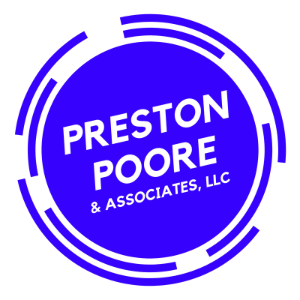How to Manage the Tyranny of the Urgent
Printer-Friendly Version
One of the most challenging roles of my career was on the Strategic Merchandising Team. I led a group of folks responsible for developing retail outlet point of sale and racks that enabled irresistible shopper experiences for three years. The responsibilities included:
- 12 project managers and multiple cross-functional partners
- Ten suppliers
- ~$100M annual spend
- 10,000s of POS elements and racks were produced, shipped, and deployed
- 100s of projects in various stages of design and commercialization
- 100s of customers
- 70+ bottlers
- 30 yearly objectives developed by management
- Multiple daily meetings with key stakeholders with no margin to work
The role was very complicated, high-pressure, and thankless at times. Chaos was the norm. I was pulling my hair out; multiple fire drills or problems occurred daily. The tyranny of the urgent ruled the team. Everything was a priority.
Because of the job stress, I began not sleeping and constantly worried about the next challenge around the corner. The work was controlling me; I was burning out and dropping balls. What’s worse is that I wasn’t leading my team well.
One day, I was sitting in a meeting, and someone presented a priorities 2 x 2 grid. I’d seen the concept before but never used it. The presenter showed how the grid helped segment initiatives and prioritize them based on levels of urgency and importance:
- High Importance/High Urgency. The work that matters most. Do these first.
- High Importance/Low Urgency. Valuable work that can be added to the daily routine.
- Low Importance/High Urgency. Complete these quickly or delegate.
- Low Importance/Low Urgency. Low-value work that should be eliminated if possible.
The light bulb went off in my head. I realized that I needed to go back to a very fundamental practice that I’d ignored – prioritization. Then, I blocked out some white space on my calendar to think and walk through the priorities grid. I identified areas where I could invest my time, leverage my strengths and make a difference. Once the grid was complete, I shared it with my manager, who loved it. We agreed to use the document during our weekly 1:1s as our discussion focal point. We’d align on the priorities and what could fall off the to-do list.
Eventually, I began to gain control of the work and my schedule. I became more productive, less stressed, and a better leader. My team noticed the difference and asked what had changed. I shared the priorities grid with them, how I used the tool and how it helped me focus on the essential work. I recommended that they implement it as well. At first, the team members were hesitant, but they slowly adopted the priorities grid. They began seeing the difference prioritization made in their work and how it impacted their well-being.
I’ve since moved into another role. Recently, I ran into one of my former Strategic Merchandising Team members. She smiled and asked me if I remembered the priorities grid. I nodded “yes,” and she told me that she still uses it today – a very gratifying moment for me.
If you struggle with a complex environment, need help establishing priorities and staying focused on the work that matters most, here are a few helpful thoughts and tips:
- Initiatives vs. Priorities. People confuse these two words. There can be many initiatives, but it’s up to you to prioritize them. Nothing is a priority if everything is a priority.
- Spending vs. Investing Time. Time is one thing that we can’t manage. However, we can manage the priorities we focus on and the corresponding energy level we expend. This is a mindset. Think about it. When you spend, you’re just passing the time. When you invest, you’re actively engaging in something or someone to gain a return. What if we began investing our time in the highest impact people or projects versus just spending our time? Ask yourself, “what will give you the greatest return on my time?” and invest there.
- White Space. We all need time to think. I’ve found that most folks don’t purposefully schedule time on their calendar to block everything out and intentionally reflect on the work that matters most. Look at your daily and weekly calendar. Do you have time to invest in yourself? If not, how do you take control of your schedule and build in white space to think without distraction? It’s hard to do but worth the time.
Suppose you’re faced with a complex work environment where the tyranny of the urgent is managing you. In that case, I recommend you take time to think, determine the work that matters by working through a priorities grid and invest your time where you can make the most significant difference. If you do, you’ll become a more effective leader.
Want to discover more about becoming an inspirational leader? Visit my website, prestonpoore.com, today!
Cheers,
Preston

Preston Poore
I help leaders lead—without the buzzwords or boring theories. After years in the Fortune 500 world, I’ve seen it all—bad bosses, great teams, and more leadership fails than I can count. Now, I share real stories, practical tips, and the occasional hard-earned lesson to help you lead with confidence. Let’s figure this out together.
Discover Your Life Purpose
Do you wake up each day dreading the idea of spending another day at work? If you’ve failed to discover and build your life around your life purpose, you might feel dissatisfied with your life. Flip the script! Get this special eBook, discover your purpose, and begin living a more fulfilling life today!


